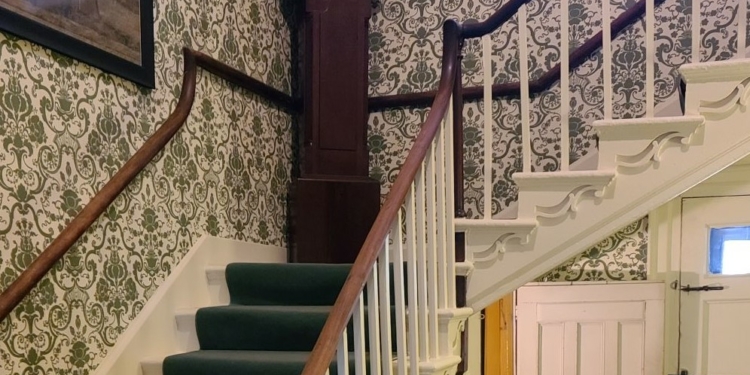By OLIVIA POUST
and KAITLIN LEMBO
[email protected]
[email protected]
ALBANY — The deep, interconnected history of Albany will be highlighted by the Ten Broeck Mansion in a series of immersive tours beginning this summer and continuing into the fall.
The city’s stories — the good, the bad, and the pieces that connect them all — will be represented across five museums in Albany. The series features three distinct tours that each offer a unique perspective into this history: “Mansions and Gardens,” “Freedom and Opportunity” and “Native Voices.”
“The beauty of these tours is not only the immersive experiences one will enjoy during the journey,” Ten Broeck Mansion executive director Kathryn Kosto said, “but how so much of the guess work is taken out for the guest. Because so many of these museums are operated by small staff, the hours can fluctuate based on unforeseen circumstances. With these tours, we already took care of all of the details, so all you have to do is show up and enjoy your time.”
“Mansions and Gardens” utilizes the Ten Broeck Mansion and gardens, Schuyler Mansion grounds, and Historic Cherry Hill to dive into the connections between these sites, which range from family ties, to architecture, to the grounds themselves. Tours take place on June 3, July 1, August 5, and September 2.
“Freedom and Opportunity” is an exploration of the city’s history of immigration, enslavement, abolition, and reform by way of the Irish American Heritage Museum, the Ten Broeck Mansion, and the Underground Railroad Education Center. Tours take place on June 17, July 15, August 19, and September 16.
“Native Voices” tells the history of Albany from the experience and perspective of indigenous peoples. The tour will connect new research on Dirck Ten Broeck as Commissioner of Indian Affairs, tours of historic artifacts at the Albany Institute of History and Art (AIHA), and AIHA’s Hudson River School galleries. Tours take place on June 24, July 22, August 26, and September 23.
“Another beautiful thing about these tours is most of these museums have beautiful gardens where people can picnic and gather safely,” Kosto continued. “The gardens are pack in/pack out, meaning you must carry out everything you bring in, but we spaced the tours out enough so you have time to take a lunch during the day or spend some extra time in a location you really love.”
The immersive exhibits help preserve the integrity of the history they’re depicting. As historic movements around justice and social issues continue to take place around the world, Kosto said museums have been a place that have been talking about these different issues for years; in many cases, there are similarities, if not parallels, to historic issues that have already been adjudicated by historians.
“Having these multiple tours in one day allows you to have a higher retention for the information,” Kosto said. “It’s kind of like if you were learning French and you spent a summer in Paris — you’re going to retain more information when you’re absorbing it repeatedly than if you were taking one French class a week that’s 30 minutes long. The interconnected stories of our area help reinforce some of the events and give a broader picture of Albany.”
As museums continue to re-open and adapt to post-pandemic life, curators and staff are hoping for an influx of visitors to some of society’s most underrated resources.
“There are such deep connections between Albany’s three 18th-century mansions,” said Deborah Emmons-Andarawis, executive director of Historic Cherry Hill. “…These tours will allow visitors to take it all in and come away with a richer, more nuanced understanding of our city’s historical context.”



